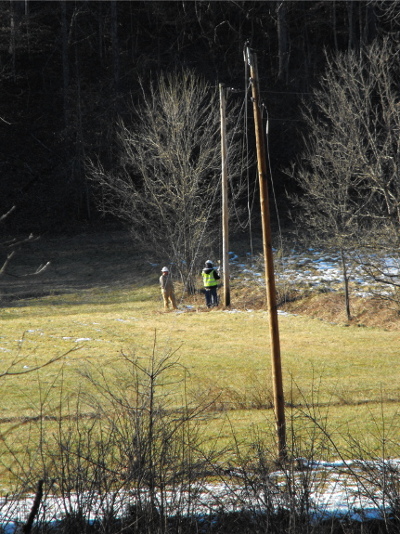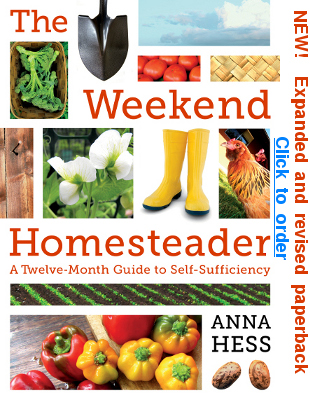
Heating one room
 One
strategy for keeping your family warm is to choose a small room and
heat it using a backup option that doesn't require electricity.
This is my least favorite method because it's awfully easy to spend a
lot of money on a backup heater that seldom gets used, and thus doesn't
work when you need it. However, many Americans can't wrap their
minds around heating themselves instead of the room (which I'll discuss
in the later posts), so I'm including the room-heating option.
One
strategy for keeping your family warm is to choose a small room and
heat it using a backup option that doesn't require electricity.
This is my least favorite method because it's awfully easy to spend a
lot of money on a backup heater that seldom gets used, and thus doesn't
work when you need it. However, many Americans can't wrap their
minds around heating themselves instead of the room (which I'll discuss
in the later posts), so I'm including the room-heating option.
If you choose a one-room
backup plan, your
first step is to decide which room would be easiest to keep warm
without electricity. Your whole family (and any cold-sensitive
pets, like guinea pigs and parrots) should fit inside without getting
on each others nerves, but the room should also be as small as possible
so that it's easier to heat. South-facing windows (or
north-facing windows if you live in the southern hemisphere) will let
in solar radiation that will warm the area considerably on a sunny
day. The room should have space for everyone to sleep, so a
master bedroom, den with a foldout couch, or area with lots of bare
floor is a good choice.
 Once you choose your
room, think about blocking off cold air that might
want to flow in. That means having some heavy curtains (or
blankets with a way of tacking them up) to keep heat from flowing out
windows at night. The room should either close off from the rest
of the house with a solid door (and a rolled up towel to fill the space
underneath), or you should plan another large blanket or curtain to
block off the entranceway.
Once you choose your
room, think about blocking off cold air that might
want to flow in. That means having some heavy curtains (or
blankets with a way of tacking them up) to keep heat from flowing out
windows at night. The room should either close off from the rest
of the house with a solid door (and a rolled up towel to fill the space
underneath), or you should plan another large blanket or curtain to
block off the entranceway.
Your room may already
have a fireplace or wood stove, in which case you
will just need to keep it stocked with plenty of dry wood, kindling,
paper, and lighters for getting the fire going. If not, you can
install a standalone propane heater that doesn't need to be vented to
the outdoors (around $200 for the low end model.) A cheaper
alternative is a free-standing kerosene heater (around $120), but be
aware that kerosene heaters create carbon monoxide, so you'll need to
increase air flow through your room for safety. Kerosene heaters
also tend to be a bit sooty and stinky, but that problem is lessened if
you light the heaters and turn them off outdoors, carrying them inside
only
when they're already in use.
I
hope you enjoy this excerpt from Weekend
Homesteader: December.
The 99 cent ebook walks you through the basics of planting your first
fruit trees,
staying warm without electricity, understanding the uses of essential
tools, and turning trash into treasures. If you're interested in
other aspects of basic emergency preparedness, Weekend
Homesteader: November gives tips on storing drinking water and the
upcoming Weekend Homesteader: January will cover backup lighting
options.
| This post is part of our Emergency Warmth lunchtime series.
Read all of the entries: |
Want more in-depth information? Browse through our books.
Or explore more posts by date or by subject.
About us: Anna Hess and Mark Hamilton spent over a decade living self-sufficiently in the mountains of Virginia before moving north to start over from scratch in the foothills of Ohio. They've experimented with permaculture, no-till gardening, trailersteading, home-based microbusinesses and much more, writing about their adventures in both blogs and books.
Want to be notified when new comments are posted on this page? Click on the RSS button after you add a comment to subscribe to the comment feed, or simply check the box beside "email replies to me" while writing your comment.
- Remove comment
- Remove comment
